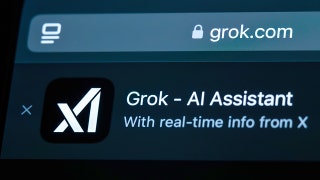Racing to get out in front of Apple, nearly every major handset maker has launched or announced new smart phones in the past week. The good news is that the new spate of phones boast better cameras, bigger screens, longer battery life, and lower prices.
You just can't get it all in one package.
Apple is expected to introduce a new slimmer, faster, iPhone with a slightly larger screen tomorrow and the scuttlebutt is that it will go on sale by the 21st of the month. Those rumors sent other manufacturers scrambling to get their phones out--or at least in front of the press--before the Apple PR deluge.
Nokia debuted its Windows Phone 8 models, for example. The top handset will be the Lumina 920, and many analysts were lukewarm to the introduction. The Windows software is arguably flashier and more flexible than Apple's, though Windows' array of tiles and files may confuse some consumers, and Microsoft has a very, very long way to go before it accrues the range of apps available on Android and iPhones.
Nokia has packed a lot of snazzy tech into its new phones, however.
First, there's the wireless charging feature. You just lay the phone down on a compatible charger (based on the Qi standard), and it starts drawing power--no plugs or new connectors required (take that, Apple.).
The phone's built-in camera also is major improvement. It uses a floating lens design to eliminate jitter and improve focus; it's a standard feature on many digital cameras and definitely improves the picture clarity. Then there is Nokia's glove trick. Those in northern climes won't need to risk frostbite or buy special handwarmers to tap on the Lumina 920; it works even with a wool glove on (and women can use the ends of their manicured nails).
Nokia also is taking full advantage of its ownership of navigation and mapping company Navteq by including free maps that are stored on the phone. No need to worry about losing the wireless connection when you're in the middle of a trip, Nokia's navigation continues to work (take that, Google).
Not to be out done, smartphone market leader Google introduced Motorola's new Android phones, the Razr HD, Razr HD Maxx, and Razr M. The phones all use Verizon's faster 4G network and have some appealing features of their own.
Aimed squarely at the manly men market, the black, Kevlar backed models include better battery life and zippy performance. The Razr HD Maxx boasts a whopping 27 hours of music playback, for example, and the Razr M I've been testing has lasted up to two full days on a single charge. That will please road warriors who are tired of competing for airport outlets.
The Razr HD also has a larger screen--4.7 inches--packed into a slim chassis. But the Razr HD and Maxx models aren't available yet. Google says they'll be for sale before the end of the year. In the meantime, the smaller Razr M is a solid competitor priced at just $99.
While Samsung has been running away with the market this past summer with its popular Galaxy S III, South Korean competitor LG has been improving designs of its own. On the near eve of Apple's announcement, LG introduced a big bad boy this week called the Intuition.
Intended to compete against Samsung's Galaxy Note (a so-called phablet, part phone, part small tablet), the Intuition has a unique 5-inch screen with a 4:3 aspect ratio. That makes it wider and better for reading Web pages and e-books, though it's contrary to HDTV's 16:9 aspect ratio. The phone also has some nice features of its own; it's a global phone, which international travelers will appreciate, and has some slick software tricks (say "cheese" and the phone takes a picture, no screen or button tapping required).
Priced at just $199 on Verizon, the Intuition also takes notes using a stylus.
Still in the wings, of course, is Apple's iPhone 5. But wait, there's one more thing. HTC is holding off until after the Apple announcement and next week will introduce its own new model (or models) into the super-heated smartphone market. Known for pushing the technological envelope, it will be interesting to see what they have to counter the iPhone.
(Meanwhile, back at the corner wireless store, Blackberry reportedly continues to lose shelf space and sales, with a new operating system not slated to appear until ... next year.)
Tomorrow's iPhone 5 introduction could do more than incite the lust of Apple fanboys and raise shareholders' fortunes: It could also possibly boost the entire U.S. economy by as much as half a percent of annualized GDP, according to a report by J.P. Morgan's chief economist, Michael Feroli.
How many iPhone 5s is that? About 8 million new phones before the end of the year.
No wonder everyone wants in on the act.
Follow John R. Quain on Twitter @jqontech or find more tech coverage at J-Q.com.








































